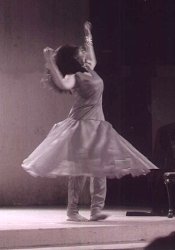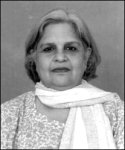 |
 |
A NEW KIND
OF THEATRE WHICH INCORPORATES TECHNIQUES
November, 2001
|
 |
| An
island in the shape of a tear drop, surrounded by sea on all sides; lush
green tropical foliage; forests in which elephants roam in majestic grandeur;
settlers who have lived and laboured in the island for centuries; thousands
of years of language and cultural traditions
embedded in the collective unconscious; They have learnt to live in peace
with other settlers of the land.
One day, they wake up to see they are considered as outsiders, being overruled or dominated by other settlers. They have no choice but to fight for their rights. From being peaceful citizens, they are forced to take on the role of aggressors. The result, strife, violence, death, rape, rampage and displacement. Yesterday, they were rightful residents of the country, but, today they are refugees seeking asylum in various countries. The island is 'Sri Lanka" which was "a living paradise" and the refugees, the Sri Lankan Tamils. It is the plight of these displaced individuals who have lost not only their homes, families and belongings, but their identity too, that the theatre production "Suryamukham" directed by Prasanna Ramaswamy chose to highlight. The script for the theatre production was created by Prasanna herself. The resource material that she has used to create the script are poems of Sri Lankan poets, Shanmukham Sivalingam, Prameel, Sanmarga, Cheran, Jeyabalan, Maithreyi, Sivaramani, Avvai, Aravinthan and Akhilan. Those who are very familiar with the Tamil language and its developments may be aware that there is a whole body of Sri Lankan poems; but, others are not. Through this theatre production, Prasanna makes the viewer aware that the persecution, agony, flight and displacement of the Sri Lankan Tamils have resulted in a whole range of poems which have a quality and texture of their own. This production has been treated by Prasanna as a rehearsed reading. But, the two viewings I have had has convinced me that it has all the potential to be a full-scale theatre production. Talking on the events that resulted in the production of "Suryamukham" Prasanna says, “A couple of years ago when painter Ebenezer came back from U.K. he talked a great deal of his impressions on Sri Lankan Tamils whom he had met and interacted with. Their efforts in making a life in this foreign country had made a deep impression on his mind. Recently, when he was asked to participate in British Council's Living Wall programme, he felt that a rehearsed recital of Sri Lankan poems would go very well with the painting he was going to do on the walls. So I agreed to do such a rehearsed reading. Through the poems I wanted to punctuate and map out the strife, displacement, life and hopes of these people. I started making a selection from my memory and then went on to books that I could lay my hands on. With the first editing I ended up with 84 poems which was finally reduced to 24." The performance is designed as the story of a community retold and reenacted by a chorus of actors using film montage. Prasanna saw the act of reading as a participation in the grief and loss of the people of "Eelam" (a lost paradise); so she thought it was necessary to involve writers and artists from other disciplines as well as activists along with the theatre actors in the reading. Needless to say that Prasanna was emphasizing that life and theatre are very closely related, each deriving strength and inspiration from the other. So, it is important to have lifelike elements and situations included in the theatre. Then, theatre itself becomes an enactment of life. The likeness of life to theatre is underscored. The structure of the piece is very thought provoking. It is not designed as a proscenium piece. It is enacted from different levels and at different spaces. The theatre space is extended beyond the proscenium stage to give it the feel of a community performance. There is a chorus, who take on different roles – at times they are the bards who go from place to place singing and storytelling. At other times they are the people of the community, the society. They are also the collective conscience of the society; the commentators on the events that take place in the society and the narrators who connect the various strands of the piece and carry the action forward. So they are at the same time inside and outside the society, the text of the play and the structure of the play. The action of the various scenes takes place at different places, so the effect is that of a revolving space, a space which includes not only the actors, but the viewers too. The viewers play a dual role; they become the participants as well as observers. The actors play many roles. They are viewers, commentators, actors, and the people of the community. The Brechtian principle of alienation and distanciation is combined with the Indian theatre principle of transformation and installation. The shape of the theatre space, through the intervention and movements of the actors resembles a teardrop that is Sri Lanka. The shift in the physical space is used also to indicate the shift in the time and space of the narration itself. Through the shift from scene to scene, not only in the physical sense, but in the details of narration also, the whole production moves away from linear narration and takes on an epic quality. In this epic women play an important part. There are three types of people depicted in this narration. Those who stayed behind in Sri Lanka even after the ethnic conflict and continued their day to day life, those who became refugees seeking asylum in different countries, still yearning to go back to their homeland, and the settlers in foreign lands who have to some extent integrated with the people and customs of the foreign land. The one common factor that binds all of them is their memories, their yearning for belonging and identification with the homeland they have lost. There is the woman who leads the chorus and through her songs and chants creates in the people an awareness of their plight. There is another woman whose son has been killed; when the police questions her she disowns him for fear of further police brutality against her other children. She is the modern Kunti, who has disowned Karna, but lives with the guilt of having disowned her own bloods product. The third woman has settled down in a foreign land and is finding some fulfillment and pleasure in the sexual act. The sexual act becomes at the same time the exorcism of the feeling of past displacement; and the fulfillment and promise of an ephemeral future. In the structure these three women form a triangle, women who reflect the various stages of angst, sense of loss, temporary release from agony and sense of hope for the future. The other spaces indicating events are the poetry book release and the scene of interrogation of Srilankan refugees in a foreign land (in this case, Germany). In the scene of the poetry book release, which takes place in the present, Prasanna uses non-actors - Muthuswamy, a playwright and theatre director, Kanimozhi and Inquilab, Tamil poets, Arul Mozhi, a lawyer and political party worker and V. Arasu, Professor of the Tamil department at Chennai University. In this sequence, the actors appear as themselves and links the past with the present. In the interrogation scene, the interrogator is indicated by a chair, and it is through the center's interpreter, probably a Tamil, that we get the hang of what is happening. The refugees are not answering the questions in a direct manner. Instead they reveal their nostalgia for their homeland and indicate that the interrogators can never understand what they have lost. The theatre piece continually strives to explore the dimensions of time and space - past and present, this and the other, now and some other time. One of the interesting and innovative sections in this piece is the dance element which has been brought in. The dance movements are basically taken from the classical dance of Bharatanatyam. The dancer, Anita Ratnam, who enacts the role of the woman who finds temporary release and fulfillment in the sexual union, brings in the sensual and erotic element that sustains life and gives hope even in times of tragedy and loss. Through the use of the symbolic language and codified gestures, Anita gives a stylised and yet intense enactment of the sexual act. Prasanna says, "I have treated it as a free dance, just going with the mood but selecting and weaving motifs from Bharatanatyam .. like lotus, bees, water, peacock and some everyday gestures in a stylised idiom, the footsteps of Bharatanatyam in a rigorous manner indicating combating of bodies in the sexual act.. . thereby arriving on a new aesthetic cohesive in a very abstract manner as a metaphor for the sensual experience, an experience which is a temporary homecoming for anybody especially to the homeless." In an otherwise neutral colour dominated costume scenario, her red and black costume stands out symbolising Night when Hope springs up. This is the only scene where music by way of a background score is used. In all the other scenes the sound is provided by the lamenting or exhorting chorus and actors. To Prasanna,
this is not a mere theatre piece; it is more or less a political statement
bringing voices from all disciplines together, voices which belong to all
sections of people who have from time to time expressed their concern over
the Sri Lankan Tamil issue.
Therefore, to the viewer it becomes theatre which has grown out of the
poetry of displaced individuals, the poetry itself becoming the background
score for the lament, the celebration of life, the past, the present and
the future.
|
| Vasanti Sankaranarayanan, is a PhD holder from Madras University on the subject “Malayalam Cinema, Society and Politics of Kerala”. She has translated books from Malayalam to English and vice versa and has written some dance scripts. She is a freelance journalist and art critic. |  |